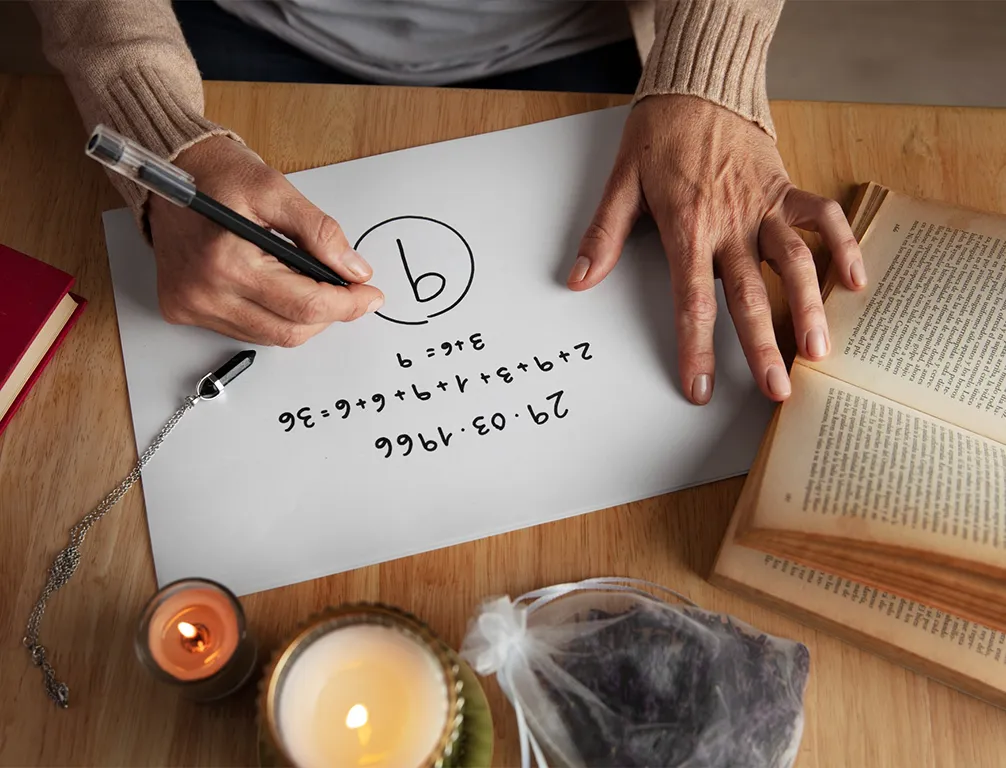Blog
How Is My Life Path Number Calculated?

I still remember the first time I tried to calculate mine. It was a rainy evening in Borivali, the kind of drizzle that makes you think twice before stepping out for milk. My mother had just finished making pakoras, and I was sitting at the dining table with a scrap of paper and a cheap ballpoint pen that kept smudging. My friend Ankita had called earlier, telling me, “Khyati, you need to know your Life Path Number. It’s the backbone of numerology!” I wasn’t entirely convinced—but curiosity won.
Here’s the thing: your Life Path Number is built entirely from your date of birth. No fancy equipment, no special charts—just numbers, reduced until you reach a single digit (unless it’s one of the master numbers: 11, 22, or sometimes 33). It’s a bit like peeling an onion layer by layer until you get to the core.
The formula? Simple on paper. Trickier if you get distracted easily—like I did that night when Arth, my son, decided to interrupt every third calculation with, “Mumma, can you guess which hand the marble’s in?”
Step 1: Write your full date of birth in numbers.
Let’s say your birthday is 23rd November 1985. That’s 2 + 3 + 1 + 1 + 1 + 9 + 8 + 5.
Step 2: Add them together.
In this example:
2 + 3 + 1 + 1 + 1 + 9 + 8 + 5 = 30.
Step 3: Reduce to a single digit.
3 + 0 = 3. So the Life Path Number is 3.
Easy, right? Well, except when you hit a master number along the way. If your sum comes to 11, 22, or 33, you don’t reduce it further—at least not in traditional numerology. These numbers are said to carry a different kind of intensity, like an amplifier turned up to full volume.
When I calculated mine that night, I got an 8. Ankita didn’t even pause before saying, “Ah, the powerhouse number—money, ambition, influence.” At that point, I laughed out loud because my bank account had about ₹1,200 in it and my so-called ‘ambition’ was limited to finishing my tea before it got cold. But here’s the funny part: over the next few years, that “8” theme of building, managing, and taking control really did start showing up.
Some people like breaking the math down by month, day, and year separately before adding. Using the same example:
- Month: November = 1 + 1 = 2
- Day: 23 = 2 + 3 = 5
- Year: 1985 = 1 + 9 + 8 + 5 = 23 → 2 + 3 = 5
Then you add the three results: 2 + 5 + 5 = 12 → 1 + 2 = 3. Same answer, just a neater route.
It’s almost meditative when you start doing it for people you know. I’ve calculated Karn’s (my husband) number—he’s a 4, steady and methodical, which explains why he’s the one who actually reads product manuals instead of tossing them aside. My brother Harshil is a 5, restless and always chasing the next adventure. And Kanika, my sister-in-law, is a nurturing 6, which tracks perfectly with the way she insists on sending everyone home with leftovers after dinner.
Does knowing your Life Path Number change your life overnight? No. But it does give you a framework—a kind of numerical mirror reflecting traits, tendencies, and potential challenges. The process of calculating it is straightforward enough, yet it has a way of making you pause and think about the patterns that already exist in your life.
That night in Borivali, when I finished scribbling the final sum, the rain had stopped. The streets were damp, smelling of wet earth and frying oil from the corner snack shop. My tea was cold, the pakoras long gone. But I had a number, and a new curiosity about what it might mean. And that, in its own small way, was the start of something.

